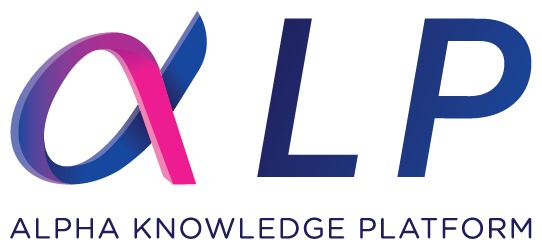TickerTape
Weekly Global Stablecoin & CBDC Update

This Week's Stories
Bank of England Governor Andrew Bailey dramatically softened his historically critical stance on stablecoins, declaring it would be “wrong to be against stablecoins as a matter of principle” and announcing plans to grant widely used stablecoins access to Bank of England reserve facilities. Speaking through a Financial Times op-ed on October 1, 2025, Bailey outlined a regulatory framework treating systemic stablecoins like traditional banks with depositor protections, insurance schemes, and statutory resolution arrangements. The Bank of England will soon publish a consultation paper proposing ownership caps of £10,000 for individuals and £10 million for corporations to mitigate financial stability risks from rapid deposit outflows.
Key Takeaways:
- Bailey abandons previous skepticism, stating stablecoins could coexist with banks while driving payment innovation
- Proposed regulatory framework includes BoE reserve access, depositor protection, and ownership caps
- Consultation paper on systemic stablecoin regime to be published following years of cautious approach
- Framework aims to separate money holding from credit provision while maintaining economic stability
Why It Matters:
- Represents watershed moment for UK crypto policy potentially positioning London as competitive stablecoin hub
- Could accelerate institutional stablecoin adoption through regulatory clarity and central bank backing
- Demonstrates major central bank recognition of stablecoins as legitimate monetary instruments
- May influence other jurisdictions’ approaches to stablecoin regulation and central bank integration
Stripe CEO Patrick Collison predicted that the growing popularity of stablecoins will eventually force traditional banks to offer more competitive deposit yields or risk losing customers to yield-bearing crypto alternatives. Speaking at a fintech conference, Collison criticized banks’ reliance on low-interest savings accounts while stablecoin holders can earn higher returns through DeFi protocols and institutional money markets. He argued that stablecoins represent a more transparent and efficient form of money that could reshape traditional banking by providing consumers with better returns on their holdings. Collison’s comments reflect growing institutional recognition that stablecoins pose competitive pressure on traditional deposit-taking institutions.
Key Takeaways:
- Stablecoin adoption will pressure banks to raise deposit rates to remain competitive with crypto yields
- Traditional banking model criticized for relying on low-interest deposits while stablecoins offer transparency
- DeFi protocols and institutional money markets provide stablecoin holders with superior yield opportunities
- Competitive pressure could force fundamental changes in banking deposit pricing strategies
Why It Matters:
- Validates stablecoins as disruptive force in traditional banking rather than complementary technology
- Could accelerate consumer migration from bank deposits to stablecoin alternatives
- Demonstrates how crypto innovation challenges traditional financial institution business models
- Positions stablecoins as catalyst for broader financial system modernization and competition
Hedera announced its scheduled mainnet upgrade to version 0.66 on October 8, 2025, at 17:00 UTC, with the process expected to take approximately 40 minutes and potentially causing temporary network disruptions. The upgrade follows the successful September 25 testnet implementation and represents continued development of Hedera’s hashgraph consensus technology. Version 0.66 includes enhancements to decentralized application capabilities, improved network efficiency, and scalability features that distinguish Hedera’s hashgraph from traditional blockchain architectures. The systematic upgrade approach demonstrates Hedera’s commitment to enterprise-grade reliability through comprehensive testing before mainnet deployment.
Key Takeaways:
- Mainnet upgrade to version 0.66 scheduled October 8, 2025, at 17:00 UTC with 40-minute maintenance window
- Follows successful testnet implementation ensuring thorough validation before production deployment
- Enhancements focus on dApp functionality, network efficiency, and scalability improvements
- Hashgraph consensus technology continues differentiation from traditional blockchain approaches
Why It Matters:
- Demonstrates systematic approach to network upgrades prioritizing reliability over speed
- Positions Hedera for expanded enterprise adoption through improved performance and capabilities
- Validates testnet-to-mainnet development process reducing deployment risks
- Supports growing ecosystem of decentralized applications and enterprise use cases
At Sibos 2025 in Frankfurt, European Central Bank Deputy Director General Dimitri Pattyn provided concrete updates on Project Pontes, the ECB’s short-term initiative to enable DLT transaction settlement using central bank money by Q3 2026. Pattyn emphasized that despite being labeled a “pilot,” Pontes is a permanent solution designed to stay operational with continuous improvements. The project will utilize three trial solutions from French, German, and Italian central banks, with Germany’s Trigger solution and France’s wholesale CBDC connecting to the TARGET2 payment system as Pontes’ two central bank money options. A consultation paper will be published in Q1 2026, with full solution delivery targeted for Q1 2028.
Key Takeaways:
- Project Pontes confirmed as permanent solution, not temporary pilot, with Q3 2026 launch timeline
- German Trigger and French wCBDC solutions will provide central bank money connectivity to TARGET2
- Italian Hashlink interoperability solution enables connection to other DLT networks
- Q1 2026 consultation paper to guide industry feedback before Q1 2028 full deployment
Why It Matters:
- Positions ECB as leader in central bank digital currency infrastructure for wholesale markets
- Provides bridge between traditional financial systems and emerging tokenized asset ecosystems
- Could accelerate European tokenized securities adoption through central bank money settlement
- Demonstrates systematic approach to integrating blockchain technology with existing payment infrastructure
The Reserve Bank of India launched a deposit tokenization pilot on October 8, 2025, using its wholesale central bank digital currency (e₹-W) as the underlying settlement layer. Chief General Manager Suvendu Pati announced the initiative at the Global Fintech Fest, explaining that the pilot will enable creation of digital representations of bank deposits stored on blockchain technology. The tokenized deposits maintain 1:1 parity with underlying bank deposits, ensuring faithful representation and redeemability while enabling faster, cheaper, and safer transactions across systems. The RBI is collaborating with several banks on the project and exploring experiments with tokenization of money market instruments.
Key Takeaways:
- Deposit tokenization pilot launched October 8, 2025, built on wholesale CBDC infrastructure
- Maintains 1:1 parity between tokens and underlying bank deposits with full redeemability
- RBI collaborating with multiple banks while exploring tokenization of money market instruments
- Initiative aims to enable faster, cheaper, and safer cross-system transactions
Why It Matters:
- Positions India as pioneer in combining CBDC infrastructure with tokenized traditional banking assets
- Could accelerate blockchain adoption in Indian banking sector through regulatory-backed framework
- Demonstrates practical application of wholesale CBDC beyond government securities settlement
- May serve as model for other central banks exploring tokenized deposit systems
Standard Chartered published a report on October 7, 2025, estimating that US dollar-backed stablecoins could drain $1 trillion worth of deposits from emerging market banks within the next three years. The bank, renowned for operating in developing economies, attributes this potential flight to President Trump’s crypto-friendly policies and the desire of individuals and companies to protect savings from currency crises. Current trends suggest stablecoin usage as savings across developing economies could jump to $1.22 trillion by end-2028 from approximately $173 billion currently. The analysis covers 16 high-risk countries including Egypt, Pakistan, Bangladesh, Sri Lanka, Kenya, Morocco, Turkey, India, China, Brazil, and South Africa.
Key Takeaways:
- $1 trillion potential deposit outflow from emerging market banks to stablecoins over three years
- Stablecoin savings in developing economies projected to reach $1.22 trillion by 2028 from $173 billion currently
- Analysis covers 16 high-risk countries experiencing twin deficits and currency volatility
- Despite large absolute numbers, outflow would represent only 2% of bank deposits in analyzed countries
Why It Matters:
- Highlights stablecoins’ potential to reshape banking in economically unstable regions
- Demonstrates how US crypto policies could impact global emerging market financial systems
- Validates “return of capital matters more than return on capital” principle driving stablecoin adoption
- Could influence emerging market central bank policies toward stablecoins and capital controls
S&P Dow Jones Indices announced the launch of the S&P Digital Markets 50 Index on October 7, 2025, creating the first major benchmark to track both cryptocurrencies and crypto-related stocks. The market capitalization-weighted index includes 15 major digital currencies such as Bitcoin, Ethereum, Cardano, Polkadot, Aave, and Solana, alongside 35 publicly listed companies including Coinbase, MicroStrategy (now Strategy), and Nvidia. The index undergoes quarterly rebalancing to adapt to market dynamics and prevent any single asset from dominating performance. Financial experts characterize the launch as a significant endorsement for cryptocurrency as a legitimate asset class, bringing transparency and regulatory legitimacy.
Key Takeaways:
- First major index combining 15 cryptocurrencies with 35 crypto-related public companies
- Market cap-weighted with quarterly rebalancing to maintain relevance and prevent concentration
- Includes major crypto assets and companies like Coinbase, MicroStrategy, and Nvidia
- Creates foundation for potential ETFs and mutual funds tracking the hybrid benchmark
Why It Matters:
- Represents institutional validation of cryptocurrency as legitimate asset class worthy of S&P recognition
- Provides structured pathway for traditional investors to gain diversified crypto market exposure
- Could attract billions in institutional liquidity through ETF and mutual fund product development
- Signals cryptocurrency’s evolution from speculative niche to data-supported mainstream asset class
Eurozone finance ministers convened on October 8, 2025, to discuss strategies for supporting euro-denominated stablecoin development to prevent the United States from monopolizing the rapidly growing stablecoin market. A senior eurozone official confirmed that ministers examined whether the Markets in Crypto-Assets Regulation (MiCA) requires modifications to facilitate euro stablecoin creation. The discussion comes as the stablecoin market approaches $300 billion with forecasts suggesting tenfold growth over the next decade, while euro stablecoins represent only approximately $620 million of total issuance. The US GENIUS Act aims to maintain dollar dominance by requiring stablecoin backing with US dollars or Treasury securities.
Key Takeaways:
- Finance ministers examine MiCA framework modifications to boost euro stablecoin competitiveness
- Euro stablecoins account for only $620 million of $300 billion global stablecoin market
- Stablecoin market forecast to grow tenfold over next decade with current US dollar dominance
- Nine-bank European consortium launched euro stablecoin in September to counter US market control
Why It Matters:
- Demonstrates European Union’s strategic response to US efforts to maintain stablecoin market dominance
- Could accelerate European stablecoin development through regulatory framework optimization
- Highlights geopolitical competition over digital currency infrastructure and monetary influence
- May influence global stablecoin market structure if Europe successfully scales euro-denominated alternatives
UK banks are advancing plans to tokenize deposits by 2026 despite Bank of England Governor Andrew Bailey’s warnings about stablecoin risks, according to Reuters reporting from September 2025. This development highlights the rapid integration of decentralized finance innovations into conventional banking, with tokenized deposits representing digital representations of tangible assets that operate on blockchain for more transparent and efficient transactions. The initiative could extend beyond deposits to other asset classes including equities and real estate, as financial institutions seek to leverage blockchain technology’s cost reduction and transaction efficiency benefits while maintaining regulatory compliance.
Key Takeaways:
- UK banks proceeding with tokenized deposit plans for 2026 despite central bank stablecoin concerns
- Initiative may expand to tokenizing other asset classes including equities and real estate
- Blockchain-based tokenization offers transaction cost reduction and improved efficiency
- Represents broader trend of traditional banking embracing decentralized finance innovation
Why It Matters:
- Demonstrates banking sector’s commitment to blockchain technology despite regulatory caution
- Could accelerate mainstream adoption of tokenized assets beyond cryptocurrency-native applications
- Positions UK as potential leader in regulated tokenization of traditional financial instruments
- May influence other jurisdictions’ approaches to tokenized deposit regulation and implementation
ALT5 Sigma Corporation (NASDAQ: ALTS) and World Liberty Financial participated in A.G.P.’s Digital Assets & Technology Showcase on October 8, 2025, featuring presentations from CFO Jonathan Hugh, Co-Founder Zak Folkman, and Advisor Matt Morgan. The session, moderated by A.G.P. Senior Managing Director Adam Carlson, focused on business strategies and recent developments within the digital asset sector. ALT5 Sigma operates as a fintech company with a pioneering $WLFI digital asset treasury strategy, leveraging blockchain infrastructure expertise and a track record of processing over $5 billion in cryptocurrency transactions to optimize treasury operations.
Key Takeaways:
- Public presentation highlighting $WLFI digital asset treasury strategy and blockchain infrastructure capabilities
- ALT5 Sigma reports over $5 billion in processed cryptocurrency transactions demonstrating operational scale
- A.G.P. showcase brings together publicly listed and emerging technology companies for institutional investor exposure
- Event signals continued institutional interest in Trump-linked crypto ventures and digital asset treasury strategies
Why It Matters:
- Demonstrates ongoing institutional engagement with Trump-affiliated cryptocurrency projects
- Validates digital asset treasury strategies as legitimate corporate finance approach
- Provides public market exposure for World Liberty Financial’s expanding ecosystem
- Could influence other publicly traded companies to consider similar digital asset treasury adoption
On October 7, euro-area finance ministers convened to discuss measures for encouraging the issuance of euro-pegged stablecoins, aiming to counter U.S. dominance in the fast-growing market. Although global stablecoin supply stands at around $300 billion, euro-denominated tokens account for only $620 million. Policymakers will assess whether adjustments to the EU’s Markets in Crypto-Assets (MiCA) regulation are needed to spur development while maintaining risk safeguards. The dialogue marks an initial engagement, with ministers collecting views on balancing innovation with consumer protection, and examining how private stablecoins interact with the pending digital euro project.
Key Takeaways:
- Euro-stablecoins represent just $620 million of a $300 billion market.
- Discussion centers on MiCA tweaks to foster high-quality euro tokens.
- Coordination sought between private stablecoins and the digital euro initiative.
- Initial ministerial debate to shape future policy roadmap.
Why It Matters:
- Strategic financial sovereignty: Boosting euro-denominated stablecoin issuance helps ensure that the euro remains relevant in the rapidly growing digital asset economy, reducing dependence on dollar-based stablecoins and promoting European financial autonomy.
- Regulatory competitiveness: Current legislation in the U.S. (such as the Genius Act) aims to sustain the dollar’s dominance, prompting eurozone ministers to consider whether European regulations (MiCA) should be updated to better support euro stablecoins and foster domestic innovation.
- Innovation vs. risk: The discussion centers on achieving a balance between encouraging digital financial innovation and managing risk appropriately in the euro area, which could shape the next generation of payment and settlement systems.
- Market opportunity: With stablecoin markets expected to grow tenfold over the next decade, increasing euro-denominated options taps into significant growth potential and could increase European market share well beyond the current $620 million issued out of a $300 billion total market.
- Integration with central bank digital euro (CBDC): These discussions also align with ongoing efforts to develop the digital euro, allowing for possible synergies and regulatory clarity between public (CBDC) and private (stablecoin) initiatives in Europe
Beginning October 8, India will allow Unified Payments Interface (UPI) users to authorize instant digital transactions using facial recognition and fingerprints linked to Aadhaar data, according to three informed sources on October 7. This marks a departure from solely PIN-based authentication, aligning with the Reserve Bank of India’s directive to modernize security protocols. The National Payments Corporation of India (NPCI) plans to showcase the biometric feature at the ongoing Global Fintech Fest. This move aims to reduce transaction friction and fraud while promoting wider digital payment adoption among consumers and merchants across urban and rural areas.
Key Takeaways
- UPI authentication expands from PIN to biometric methods (face/fingerprint).
- Aadhaar linkage ensures secure identity verification.
- NPCI to demonstrate solution at Global Fintech Fest.
- Expected to boost user convenience and curb fraud in digital payments.
Why It Matters:
- Strengthened security: Biometric authentication (facial recognition, fingerprints) adds an extra layer of protection compared to traditional PINs, reducing fraud and unauthorized access to payment systems.
- Increased convenience: Users can approve payments quickly without remembering passwords or carrying authentication devices, streamlining the payment process.
- Expanded financial inclusion: By leveraging Aadhaar biometric data, even individuals without advanced smartphones or literacy can participate in digital payments, supporting broader access.
- Regulatory support: The rollout follows Reserve Bank of India guidelines for alternative authentication methods, indicating regulatory confidence and support for innovation.
- Industry showcase: The launch at the Global Fintech Festival signals India’s intention to lead in digital payment innovation and could set precedents for global adoption.
- Potential for growth: Enhanced trust and usability may accelerate adoption of UPI and digital payments, driving further growth in India’s digital economy.
On October 8, the Reserve Bank of India (RBI) unveiled a retail sandbox for its CBDC, allowing fintech firms to design, test, and pilot consumer-facing applications using the digital rupee. Chief General Manager Suvendu Pati stated that this sandbox is part of the ongoing e-rupee initiative, which commenced in December 2022. Approximately 7 million users have already engaged with the retail CBDC pilot, and this sandbox aims to accelerate innovation by inviting diverse use cases—from merchant payments to person-to-person transfers—under controlled regulatory oversight.
Key Takeaways:
- RBI’s retail CBDC sandbox is live, enabling fintech experimentation with the e-rupee.
- The sandbox leverages the existing retail pilot, now with expanded developer access.
- Over 7 million users are already participating in India’s digital rupee ecosystem.
Why It Matters:
- Demonstrates India’s commitment to scaling CBDC use cases in real-world settings.
- Provides a model for other countries considering controlled CBDC rollouts.
- Encourages private sector innovation in digital payments under central bank supervision.
JPMorgan analysts reported on October 8, 2025, that stablecoin adoption could generate an additional $1.4 trillion in demand for U.S. dollars by 2027, if sufficient overseas investors embrace these digital assets. The bank estimates the current stablecoin market at $260 billion with potential to reach $2 trillion in optimistic scenarios. Nearly 99% of stablecoins, including Tether, are pegged 1:1 to the dollar, meaning foreign individuals or businesses exchanging local currency for stablecoins creates new dollar demand. Rather than accelerating de-dollarization, JPMorgan argues that rising stablecoin usage could actually strengthen the dollar’s dominance in global financial systems.
Key Takeaways:
- Stablecoin growth from current $260 billion to potential $2 trillion could create $1.4 trillion in additional dollar demand
- 99% of stablecoins maintain 1:1 peg to U.S. dollar, directly translating market growth to dollar demand
- Foreign adoption of stablecoins strengthens rather than weakens dollar’s global financial system dominance
- JPMorgan views stablecoins as reinforcing existing monetary order rather than disrupting it
Why It Matters:
- Validates stablecoins as strategic tool for maintaining U.S. dollar hegemony globally
- Could influence Federal Reserve and Treasury policies toward supporting stablecoin development
- Demonstrates how digital currency innovation can strengthen rather than threaten traditional monetary systems
- Provides counter-narrative to concerns about stablecoins undermining sovereign currency control
The state-owned Bank of North Dakota announced partnership with payments infrastructure giant Fiserv to launch “Roughrider Coin,” a U.S. dollar-backed stablecoin targeting a 2026 debut. The token will operate on Fiserv’s digital asset platform and integrate with its white-label FIUSD system, a stablecoin network designed for regulated banking environments. Roughrider Coin aims to increase bank-to-bank transactions, encourage global money movement, and drive merchant adoption across North Dakota. This follows Fiserv’s June entrance into crypto with its issuance platform on Solana, as the company processes over 90 billion transactions annually for 10,000 financial institutions.
Key Takeaways:
- North Dakota joins Wyoming as second U.S. state developing government-backed stablecoin
- Partnership with Fiserv leverages existing infrastructure serving 10,000 financial institutions
- Roughrider Coin targets bank-to-bank transfers and merchant payments rather than retail adoption
- Launch follows passage of federal GENIUS Act enabling regulated stablecoin frameworks
Why It Matters:
- Demonstrates growing state-level adoption of stablecoins as legitimate government financial tools
- Validates regulated banking infrastructure providers’ commitment to stablecoin technology
- Could accelerate mainstream stablecoin adoption through government endorsement and banking integration
- Positions North Dakota as innovator in state-level digital currency development
Reserve Bank of India Governor Shaktikanta Das announced the launch of the Unified Markets Interface (UMI) on October 8, 2025, enabling tokenization of various financial assets using the wholesale Central Bank Digital Currency infrastructure. Speaking at the Global Fintech Fest, Das emphasized the need to develop digital public infrastructure for data integration to widen and deepen financial inclusion. The UMI builds upon the successful deposit tokenization pilot launched the same day, expanding the scope to include government securities, commercial papers, and other money market instruments using blockchain technology with central bank money settlement.
Key Takeaways:
- UMI launched to tokenize diverse financial assets beyond deposits using wholesale CBDC infrastructure
- Initiative focuses on developing digital public infrastructure for enhanced financial inclusion
- Platform enables tokenization of government securities, commercial papers, and money market instruments
- Built on proven wholesale CBDC framework ensuring central bank money settlement integrity
Why It Matters:
- Positions India as global leader in comprehensive financial asset tokenization using CBDC infrastructure
- Could accelerate blockchain adoption across Indian capital markets through regulatory-backed platform
- Demonstrates systematic approach to digital transformation of traditional financial instruments
- May influence other central banks to develop similar tokenization platforms using CBDC foundations
European Union finance ministers convened on October 9, 2025, to discuss the EU’s strategic position on euro-backed stablecoins amid growing concerns about U.S. dollar dominance in the digital currency market. The meeting addressed potential modifications to the Markets in Crypto-Assets Regulation (MiCA) framework to better support euro stablecoin development and competitiveness. Officials examined regulatory barriers that may be hindering European stablecoin innovation while the global market approaches $300 billion with overwhelming dollar denomination. The discussion follows the September launch of a nine-bank European consortium developing euro stablecoins for 2026 deployment.
Key Takeaways:
- Finance ministers convene October 9 to strategize EU response to dollar-dominated stablecoin market
- Meeting examines potential MiCA framework modifications to support euro stablecoin competitiveness
- Discussion coincides with approaching $300 billion global stablecoin market overwhelmingly denominated in dollars
- Follows September announcement of nine-bank consortium developing euro stablecoins for 2026
Why It Matters:
- Represents high-level European political commitment to challenging U.S. stablecoin market dominance
- Could result in regulatory changes supporting European stablecoin innovation and adoption
- Demonstrates geopolitical competition over digital currency infrastructure and monetary influence
- May accelerate European stablecoin development through coordinated policy support
Indian digital transformation solutions provider Comviva announced on October 8, 2025, that its fintech platforms have achieved a milestone of processing over $1 billion in daily transactions. The company processes over 7.5 billion transactions annually with total transaction value exceeding $400 billion, surpassing Finland’s GDP. According to the GSMA Mobile Money Report 2024, Comviva commands a 24% share of the global mobile money market. The announcement was made at the Global Fintech Fest 2025 in Mumbai, highlighting the company’s AI-led, cloud-native digital payments experience across payment orchestration, tokenization, mobile wallets, QR codes, and USSD-based payments.
Key Takeaways:
- Daily transaction processing exceeds $1 billion milestone with $400 billion annual volume
- Commands 24% global mobile money market share according to GSMA Mobile Money Report 2024
- Platform integrates AI-led, cloud-native capabilities including tokenization and payment orchestration
- Serves wide financial ecosystem from retail payments to large-scale government disbursements
Why It Matters:
- Demonstrates massive scale of digital payment processing in emerging markets like India
- Validates tokenization and digital payment technologies for large-scale commercial deployment
- Positions India as global leader in mobile money and digital payment innovation
- Highlights potential for digital payment platforms to achieve significant economic impact at national scale
The Common Market for Eastern and Southern Africa (COMESA) has unveiled a regional digital payments platform designed to reduce transaction costs and settle cross-border trade in local currencies. The system allows participating businesses in COMESA’s 21 member states to transact directly without relying on hard currencies, cutting foreign exchange fees and settlement delays. Developed in collaboration with regional central banks and payments infrastructure providers, the new platform supports real-time gross settlement for eligible transactions and integrates compliance features, including KYC and AML screening. Initial pilots involve select importers and exporters, with plans to scale across sectors such as agriculture and manufacturing. The initiative aims to foster intra-African trade by leveraging digital rails and promoting currency diversification.
Key Takeaways:
- Enables real-time settlement in local currencies to lower FX costs and delays.
- Integrates compliance modules for KYC and anti-money laundering checks.
- Pilot phase includes key import-export corridors in agriculture and manufacturing.
- Seeks to enhance financial inclusion by reducing dependency on hard currencies.
- Platform built in partnership with regional central banks and payments vendors.
Why It Matters:
- Reduces trade friction and boosts intra-regional commerce in Africa.
- Strengthens local currencies and monetary sovereignty.
- Offers a digital public infrastructure alternative to private cross-border rails.
- Sets a precedent for other regional economic communities.
- Could accelerate adoption of CBDC frameworks in Africa.
SoftBank’s mobile payments unit PayPay Corp has purchased a 40% equity stake in Binance Japan, the local subsidiary of the leading cryptocurrency exchange, aiming to bolster its digital-payments ecosystem. The transaction, undisclosed in financial terms, grants PayPay access to Binance’s technology stack and crypto-liquidity channels. PayPay plans to integrate cryptocurrency rails into its QR-code payments app, enabling seamless fiat-crypto conversions and on-ramping for retail users. The partnership will also explore tokenized loyalty rewards and cross-border payment corridors using stablecoins. The deal underscores PayPay’s strategy to augment traditional digital payments with blockchain capabilities and positions Japan as a testbed for regulated crypto-enabled services.
Key Takeaways:
- PayPay gains blockchain infrastructure and liquidity via Binance Japan stake.
- Integration planned for in-app crypto on-ramp and off-ramp features.
- Potential launch of tokenized loyalty and stablecoin payment options.
- Strengthens PayPay’s competitive edge in Japan’s crowded QR-payments market.
- Transaction underscores convergence of fintech and crypto sectors.
Why It Matters:
- Marks a major crypto-tradfi collaboration in Asia’s second-largest economy.
- Could accelerate consumer adoption of crypto-based payments.
- Demonstrates mainstream fintech embracing digital-asset rails.
- May influence regulatory dialogue on crypto-payments in Japan.
- Signals PayPay’s ambition to diversify beyond conventional payment methods.
Cryptocurrency exchange Coinbase and payments giant Mastercard have engaged in advanced acquisition talks to purchase BVNK, a London-based fintech that builds stablecoin payment infrastructure, with a valuation between $1.5 billion and $2.5 billion according to Fortune. Sources indicate Coinbase currently has the inside track over Mastercard, though no final deal has been reached. If completed, this would represent the largest stablecoin-related acquisition to date, surpassing Stripe’s $1.1 billion Bridge acquisition last year. BVNK provides tools enabling businesses to send and receive funds using stablecoins, offering instant settlement and lower fees compared to legacy systems like SWIFT or card networks.
Key Takeaways:
- Potential $1.5-2.5 billion deal would be largest stablecoin acquisition, exceeding Stripe’s $1.1 billion Bridge purchase
- Coinbase appears to lead bidding over Mastercard for London-based stablecoin infrastructure provider
- BVNK enables instant settlement and lower fees compared to traditional payment systems
- Competition demonstrates mainstream financial and crypto firms battling to control next wave of digital payments
Why It Matters:
- Signals intensifying competition between traditional payment networks and crypto exchanges for stablecoin market control
- Could reshape stablecoin flow through both crypto and traditional financial systems if deal closes
- Validates stablecoin infrastructure as strategic asset worthy of multi-billion dollar valuations
- Demonstrates Mastercard’s serious commitment to competing with emerging blockchain-based payment alternatives
Citigroup invested in BVNK through Citi Ventures, its venture capital arm, as major U.S. banks deepen their engagement with cryptocurrency and digital assets amid favorable U.S. regulation. BVNK co-founder Chris Harmse confirmed the company’s valuation now exceeds the $750 million revealed in its previous funding round, though exact investment amounts remain undisclosed. The stablecoin infrastructure company has experienced considerable growth, particularly in the U.S., which has become its fastest-expanding market over the past 12-18 months following the GENIUS Act’s regulatory clarity. BVNK’s platform serves as payment rails enabling global stablecoin transactions and fiat-to-crypto conversion.
Key Takeaways:
- Citi Ventures investment values BVNK above previous $750 million funding round valuation
- U.S. becomes BVNK’s fastest-growing market following GENIUS Act regulatory framework implementation
- Platform enables cross-border payments to suppliers, contractors, and merchants using stablecoin infrastructure
- Company targets digital banks and neobanks for stablecoin integration into primary checking services
Why It Matters:
- Demonstrates major Wall Street banks’ strategic commitment to stablecoin infrastructure investment
- Validates regulatory clarity’s impact on accelerating institutional crypto adoption in the United States
- Positions traditional banks to compete with fintech companies in cross-border digital payments
- Could accelerate mainstream stablecoin adoption through established banking relationships and infrastructure
Uganda launched one of Africa’s most ambitious blockchain initiatives, combining a $5.5 billion real-world asset tokenization project with the country’s first central bank digital currency pilot. The initiative, led by Global Settlement Network and Uganda’s Diacente Group, will tokenize physical infrastructure across agriculture, mining, renewable energy, and commerce sectors. The digital Ugandan shilling operates on GSN’s permissioned blockchain, backed by treasury bonds and accessible via smartphones and USSD technology for over 40 million citizens. The CBDC complies with Know Your Customer and Anti-Money Laundering standards while supporting programmable economy development.
Key Takeaways:
- $5.5 billion asset tokenization covers agriculture, mining, renewable energy, and commerce infrastructure
- Digital shilling backed by treasury bonds operates on permissioned blockchain with smartphone access
- CBDC reaches 40+ million Ugandans through USSD technology ensuring widespread financial inclusion
- Initiative positions Uganda as leader in regulated blockchain adoption across Sub-Saharan Africa
Why It Matters:
- Represents largest blockchain infrastructure project in Sub-Saharan Africa demonstrating government commitment
- Could serve as model for other developing economies seeking blockchain-based financial inclusion
- Validates programmable economy concept linking digital currency to real-world asset development
- Demonstrates potential for CBDCs to drive economic development beyond simple payment applications
European Central Bank Executive Board member Fabio Panetta provided insights on the digital euro’s consumer benefits during an October 9, 2025 interview with Delfi. Panetta emphasized that the digital euro responds to changing payment behavior as people increasingly adopt digital payments, while ensuring European monetary sovereignty and financial system stability. He highlighted the digital euro’s role in preserving privacy and providing direct access to central bank money in digital form. The interview addressed consumer protection, innovation potential, and the digital euro’s position within Europe’s broader digital transformation strategy.
Key Takeaways:
- Digital euro responds to increasing consumer preference for digital payment methods
- Initiative preserves European monetary sovereignty while ensuring financial system stability
- Provides direct consumer access to central bank money in digital format with enhanced privacy protection
- Positions digital euro as essential component of Europe’s comprehensive digital transformation
Why It Matters:
- Demonstrates ECB’s continued commitment to digital euro development despite technical and regulatory challenges
- Addresses consumer concerns about privacy and sovereignty in digital currency implementation
- Could influence public opinion and political support for digital euro advancement
- Signals ECB’s strategic response to global competition from other central bank digital currencies
The Centre for Economic Policy Research hosted its second annual Fintech and Digital Currencies Research and Policy Network meeting on October 9-10, 2025, in Gerzensee, Switzerland, organized jointly with the Study Center Gerzensee, a Swiss National Bank foundation. The meeting brought together academic researchers, policymakers, and industry experts to discuss topics broadly related to money, banking, payments, and the weaponization of payment systems. The event provided a platform for examining digital currency developments, regulatory approaches, and the intersection of technology with monetary policy across European and global contexts.
Key Takeaways:
- Second annual meeting organized by CEPR with Swiss National Bank foundation at Gerzensee study center
- Topics include money, banking, payments, and payment system weaponization in digital currency context
- Brings together academic researchers, policymakers, and industry experts for comprehensive dialogue
- Focuses on European and global digital currency developments and regulatory frameworks
Why It Matters:
- Provides authoritative academic and policy foundation for European digital currency development
- Creates dialogue between researchers and policymakers shaping future monetary and payment systems
- Could influence European regulatory approaches to digital currencies and payment innovation
- Demonstrates continued European commitment to leading global digital currency research and policy development
Powered by






